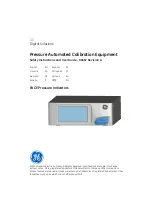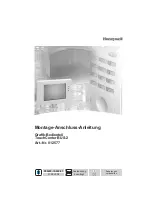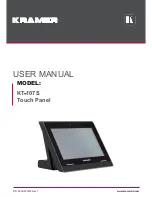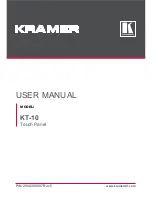
WINAICO
is
a
trademark
of
Win
Win
Precision
Technology
Co.,
Ltd.
www.winaico.com
6.2
Electrical
installation
Choice
of
module
Ensure
the
module
meets
the
technical
requirements
of
the
system
as
a
whole.
Ensure
that
other
system
components
do
not
exert
damaging
mechanical
or
electrical
influences
on
the
module.
When
connected
in
series,
modules
must
all
have
the
same
amperage.
When
connected
in
parallel,
the
modules
must
all
have
the
same
voltage.
The
modules
must
not
be
connected
together
to
create
a
voltage
higher
than
the
permitted
system
voltage.
Modules
must
not
be
fitted
as
overhead
glazing
or
vertical
glazing
(façade).
Ensure
that
the
mounting
system
can
also
withstand
the
anticipated
loads,
e.g.
wind
and
snow
loads.
There
are
openings
at
the
base
of
the
module
frame
to
allow
water
from
precipitation
to
drain
away.
Ensure
that
the
functionality
of
these
openings
is
not
restricted
by
the
format
of
the
module
installation.
Diodes
and
fuses
The
shading
of
individual
solar
cells
or
solar
modules
can
lead
to
the
shaded
area
heating
up
because
in
this
case
electrical
energy,
generated
by
other
parts
of
the
PV
system,
is
used
in
the
darkened
module
area.
The
use
of
bypass
diodes
or
other
technical
elements
to
bridge
the
shady
areas
results
in
a
reduction
in
the
warming
up
process
and
in
the
loss
of
performance
of
the
respective
PV
system.
WINAICO
solar
modules
are
factory
‐
fitted
with
integrated
bypass
diodes
or
other
design
elements,
which
offer
efficient
protection
to
the
cells.
If
it
should
be
necessary
to
connect
the
module
strings
in
parallel
then
please
proceed
as
follows:
Select
one
of
the
module
strings
requiring
parallel
connection.
Insert
a
suitably
dimensioned
protective
diode
into
one
of
the
two
connection
lines
leading
to
this
string,
such
that
these
lie
in
the
conductance
direction
in
this
string
during
the
conventional
generation
of
electrical
energy;
i.e.
so
that
the
electrical
current
is
able
to
pass
through
them.
In
order
to
attain
this
it
is
necessary
to
connect
the
diode
anode
with
the
positive
(+)
connection
of
this
string
and
the
diode
cathode
with
the
negative
(
‐
)
connection
of
the
string.
Once
work
on
the
first
module
string
is
complete,
repeat
this
process
for
all
of
the
other
strings
requiring
parallel
connection.
Then
establish
the
requisite
connections
for
the
parallel
interconnection
of
these
strings.
In
place
of
the
additional
diodes
it
is
also
possible
to
install
direct
current
string
fuses.
These
must
be
configured
according
to
the
maximum
quiescent
current
(IR),
which
is
quoted
in
the
data
sheets
pertaining
to
the
respective
modules.
If
shading
of
individual
module
strings
within
a
parallel
circuit
is
expected,
diodes
are
preferable.
The
installation
of
additional
diodes
or
fuses
is
necessary
with
the
parallel
connection
of
module
strings
because
the
internal
protection
measures
adapted
to
module
performance
(e.g.
bypass
diodes)
are
not
able
to
adequately
regulate
the
current
flow
in
a
parallel
circuit
in
the
event
of
the
shading
of
individual
module
strings.
A
failure
to
observe
this
may
result
in
the
corresponding
solar
modules
(including
the
electronic
components
contained
within
them)
being
damaged.
WINAICO
fundamentally
recommends
the
installation
of
string
fuses
(DC!)
with
both
series
and
parallel
type
connections,
in
order
to
protect
the
solar
modules
in
the
event
of
a
malfunction
(e.g.
an
inverter
defect).
The
fuses
must
be
configured
according
to
the
maximum
quiescent
current
(IR),
which
is
quoted
in
the
data
sheets
pertaining
to
the
respective
modules.
Summary of Contents for WSP?M6
Page 1: ...Installation Manual Crystalline module series WSP and WST ...
Page 15: ......

































